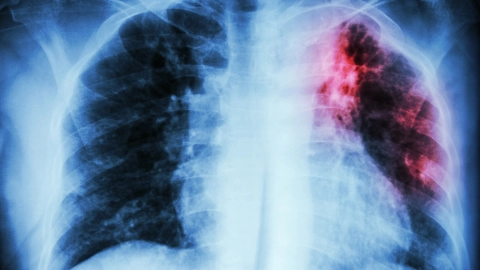ICD-Code A15.5: Tuberculosis of larynx, trachea and bronchia, confirmed bacteriologically, molecularly or histologically
You have tuberculosis in the windpipe, bronchial tubes or larynx.
Tuberculosis is also abbreviated to TB. Tuberculosis is caused by certain bacteria. The bacteria are transmitted through coughing and sneezing, for example. The bacteria can remain undetected in the body for a very long time. But they can also cause severe inflammations. The bacteria trigger symptoms when the body’s defense system is weakened. For example, tuberculosis may cause fever, coughing and a feeling of weakness. It is also possible to lose weight and feel very tired.
Your windpipe, bronchial tubes or larynx have been inflamed by the tuberculosis. The air is breathed in through the mouth or nose. From there the air goes into the trachea via the larynx. At the end of the windpipe are two bronchial tubes (or bronchi) branching away from it. The bronchial tubes run into the lungs. What is more, the bronchial tubes divide into even smaller branches. The larynx, the trachea, the bronchia and the lungs are part of the lower airways.
Additional indicator
On medical documents, the ICD code is often appended by letters that indicate the diagnostic certainty or the affected side of the body.
- G: Confirmed diagnosis
- V: Tentative diagnosis
- Z: Condition after
- A: Excluded diagnosis
- L: Left
- R: Right
- B: Both sides
Further information
Source
Provided by the non-profit organization “Was hab’ ich?” gemeinnützige GmbH on behalf of the Federal Ministry of Health (BMG).

